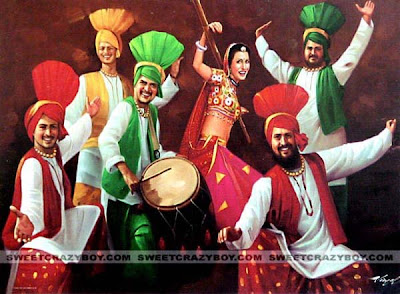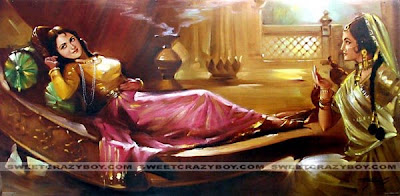Many recipes first emerged during the initial Vedic period, when India was still heavily forested and agriculture was complemented with game hunting and forest produce. In Vedic times, a normal diet consisted of fruit, vegetables, grain, dairy products, honey, and meat, especially poultry. Over time, some segments of the population embraced vegetarianism. Initially, the caste system also dictated the diet of the people. The Brahmins were allowed dairy and vegetarian fare, the warriors or Kshatriya clan were permitted meat from the hunt, the traders or Vaishnavas were predominantly vegetarian and consumed a lot of grains or lentils and the Sudra who were the lowliest class were permitted to eat boar or other animals that were shunned by the higher castes. The advent of Buddhism affected this shift, as well as an equitable climate permitting a variety of fruits, vegetables, and grains to be grown throughout the year. A food classification system that categorized any item as saatvic, raajsic or taamsic developed in Ayurveda. The Bhagavad Gita prescribes certain dietary practices (Chapter 17, Verses 8–10). In this period, consumption of beef became taboo, due to cattle being considered sacred in Hinduism. Many Indians continue to abide by this belief, making the use of beef in Indian cuisine rather rare. Beef is eaten predominantly by the Muslims and Christians and in India, beef is normally buffalo meat.
CHITIKA
What does Chitika mean?
Chitika (pronounced Chih-tih-ka) means "snap of the fingers", in Telegu (a South Indian Language), and represents the speed at which Chitika online ads display on a website.
Chitika is an online ad network and data analytics firm with offices in the U.S. and India. Since its inception in 2003, Chitika has quickly become a leader in the Search, Local and Mobile sectors, catering a staggering 4 billion strategically targeted ads each month to a vast network of over 200,000 sites. Chitika ads are known in the industry for the ability to perform unlike any other by delivering the right ad to the right user at the right time - helping advertisers and publishers achieve the highest possible ROI. A team of passionate and innovative Data Solutions Engineers are constantly mining the massive amounts of data generated within the Chitika network, seeking new and innovative optimization techniques every day.
Chitika (pronounced Chih-tih-ka) means "snap of the fingers", in Telegu (a South Indian Language), and represents the speed at which Chitika online ads display on a website.
Chitika is an online ad network and data analytics firm with offices in the U.S. and India. Since its inception in 2003, Chitika has quickly become a leader in the Search, Local and Mobile sectors, catering a staggering 4 billion strategically targeted ads each month to a vast network of over 200,000 sites. Chitika ads are known in the industry for the ability to perform unlike any other by delivering the right ad to the right user at the right time - helping advertisers and publishers achieve the highest possible ROI. A team of passionate and innovative Data Solutions Engineers are constantly mining the massive amounts of data generated within the Chitika network, seeking new and innovative optimization techniques every day.
Jantar Mantar

Constructed entirely of local stone and marble, the Jantar Mantar in Jaipur is the largest and best preserved of India’s historic observatories. Built in the early 1700s by the scholarly Maharaja Jai Singh II, the site’s monumental instruments measure and predict astronomical events with extraordinary precision. Noteworthy are the Samrat Yantra, a 27-meter-high sundial still accurate within two seconds, and a duo of sunken hemispheres that allow observers reclining within to track celestial movements. .
Indian outdoor wrestling

Pehlwani (Devanagari: पहलवानी, Urdu: پہلوانی), Kushti (Devanagari: कुश्ती, Urdu: کشتی), or modern Indian wrestling, is a synthesis of an indigenous form of wrestling that dates back at least to the 5th century BC and a Persian form of wrestling brought into South Asia by the Mughals.
A practitioner of this sport is referred to as a pehlwan (also spelled pahlwan in Persian, champion, literally a Parthian). Generally speaking, Hindu teachers of wrestling are known as guru and Muslim teachers ustad.The Indian wrestling form has undergone several changes in both the nomenclature and training methodologies through the ages. The more prominent influences include the introduction of Persian nomenclature and western training methods. Wrestling competitions, known as Dangals, held at village levels, have their own rules which vary from place to place. Usually, a win is awarded by decision from the panel of judges, knockout, stoppage or submission. The sport is popular in both India and Pakistan.
Aishwarya Rai
 Aishwarya Rai Bachchan or Aishwarya Bachchan (Birthname: Aishwarya Rai; Tulu: ಐಶ್ವರ್ಯಾ ರೈ; born November 1, 1973) is an internationally renowned Indian actress. Before starting her acting career, she worked as a model, and gained fame after winning the Miss World contest in 1994.
Aishwarya Rai Bachchan or Aishwarya Bachchan (Birthname: Aishwarya Rai; Tulu: ಐಶ್ವರ್ಯಾ ರೈ; born November 1, 1973) is an internationally renowned Indian actress. Before starting her acting career, she worked as a model, and gained fame after winning the Miss World contest in 1994.Indian Army

The Indian Army is one of the armed forces of India and has responsibility for land-based military operations. It has the primary responsibility of maintaining the peace and security of the country, patrolling the borders and conducting counter terrorist operations. It also conducts rescue and humanitarian operations during calamities and disturbances, and has frequently been called upon to maintain the internal security of the country.
Taj Mahal

The Taj Mahal is a mausoleum located in Agra, India, that was built under Mughal Emperor Shah Jahan in memory of his favorite wife, Mumtaz Mahal. The Taj Mahal (also "the Taj") is considered the finest example of Mughal architecture, a style that combines elements from Persian, Turkish, Indian, and Islamic architectural styles. In 1983, the Taj Mahal became a UNESCO World Heritage Site and was cited as "the jewel of Muslim art in India and one of the universally admired masterpieces of the world's heritage." While the white domed marble and tile mausoleum is most familiar, Taj Mahal is an integrated symmetric complex of structures that was completed around 1648.
Subscribe to:
Posts (Atom)














